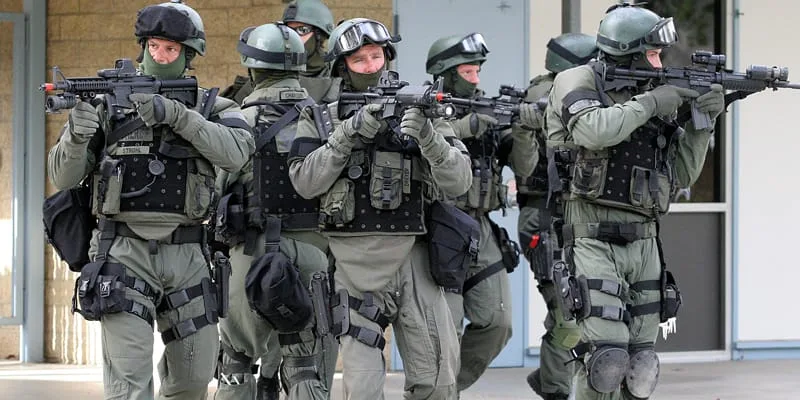Why Ballistic Vests Should Be Worn During Training
The only way police officers can learn how body armor will affect their performance is by wearing it during training. Hard and soft body armor will each have a different impact. So, wearing both types of during firearms and defensive tactics (DT) training will allow officers to be much better prepared. They need to experience first-hand the changes in shooting stance, breathing and overall physical performance.
You wouldn’t enter a tennis tournament on grass courts if you’d only ever played on hard or clay courts would you? In the same vein, it makes no sense to provide officers with body armor unless they’ve worn it during training. They must be fully prepared to chase after suspects, wrangle with domestic abusers and exchange gunshots while wearing protective gear.
Three Ways to Test Out Your New Body Armor
There are many different brands and models of body armor, and when worn they all feel differently. The identical piece of body armor can fit and restrict someone differently depending how they’ve adjusted the straps.
Here are a few ways to try out your body armor ahead of time:
- Wear your new piece of body armor while being trained in subject control techniques. It’s better to find out ahead of time how your armor reacts to being struck. You also need to know how it affects you while wrestling a suspect to the ground.
This will help you determine whether your body armor is inclined to ride up and possibly cut off your breathing. You will also find out whether you need to adjust the shoulder and/or side straps to improve the fit.
- You should also wear your body armor at the shooting range as you go through your qualification course. It’s vital that you learn how wearing it affects how you draw your weapon. Evaluate your shooting stance and if it improves the odds of a round striking your trauma plate instead of you.
It is far better to try things out when your life is not on the line. You need to uncover any shortcomings in training and any flaws in your equipment before you’re in any real danger.
- While you’re at it do some calisthenics while wearing your body armor. You want to be aware of any discomfort, physical limitations, respiration restrictions and/or choke points due to the fit.
After all this you’ll probably be fairly sweaty. No worries, your body armor came with a replacement liner, which is most likely still in the box. Read the instructions provided by the manufacturer on how to replace the liner. Once you’ve done that you’ll look and smell good again.
It is Vital That You Also Train Wearing Hard Body Armor
Unfortunately, there has been an increase in active shooter incidents clear across America in recent years. This has caused more police departments to issue heavy body armor and carriers. If budgets won’t allow, officers are starting to buy their own. The added protective armor is absolutely necessary when facing rounds coming from a rifle.
Officers are packing their own customized kits equipped with additional rifle magazines, restraints and handcuffs. They’re also including first aid kits with enough supplies to treat themselves and others. One kit can cost hundreds of dollars, but it’s essential to ensure the officer’s safety in these types of incidents. However, very few officers are actually being trained while wearing heavy body armor.
Don’t forget that you will be under a great deal of stress when the time comes to use your kit. To be fully prepared ask yourself these questions before that time comes:
- Do you have any idea what impact carrying all that extra weight will have on the gear you already carry and use?
- Does the body armor change the position of or block your body camera?
- Can you quickly and easily grab your radio, duty weapon and magazines?
- How will the added weight of the body armor affect you physically?
- And what impact, if any, will it have on your breathing?
Have someone time you to find how long it actually takes you to put your hard body armor on. Timing should start from the time you open the door to get out of your cruiser, get all the gear out of your trunk and put it on. Don’t forget to include the time it takes you to rearrange all the other gear you carry to accommodate the body armor. This is how long it will actually take you to get yourself ready to enter an active shooter scene.
Practice this exercise over and over again so you will be prepared in advance. Practice and train as much as you can with all your equipment on to increase your comfort level under stress. The more practice and training you have wearing all your equipment, the better prepared and safer you’ll be.










Thanks for pointing out that you should wear your body armor at the shooting range, so you can get a feel for how the armor affects the action of drawing your weapon. It makes sense that wearing Kevlar armor would affect one’s range of motion. I didn’t realize the importance of familiarizing the motions with body armor on, so thanks for sharing that advice!
does body armor have a lingering negative affect on breathing